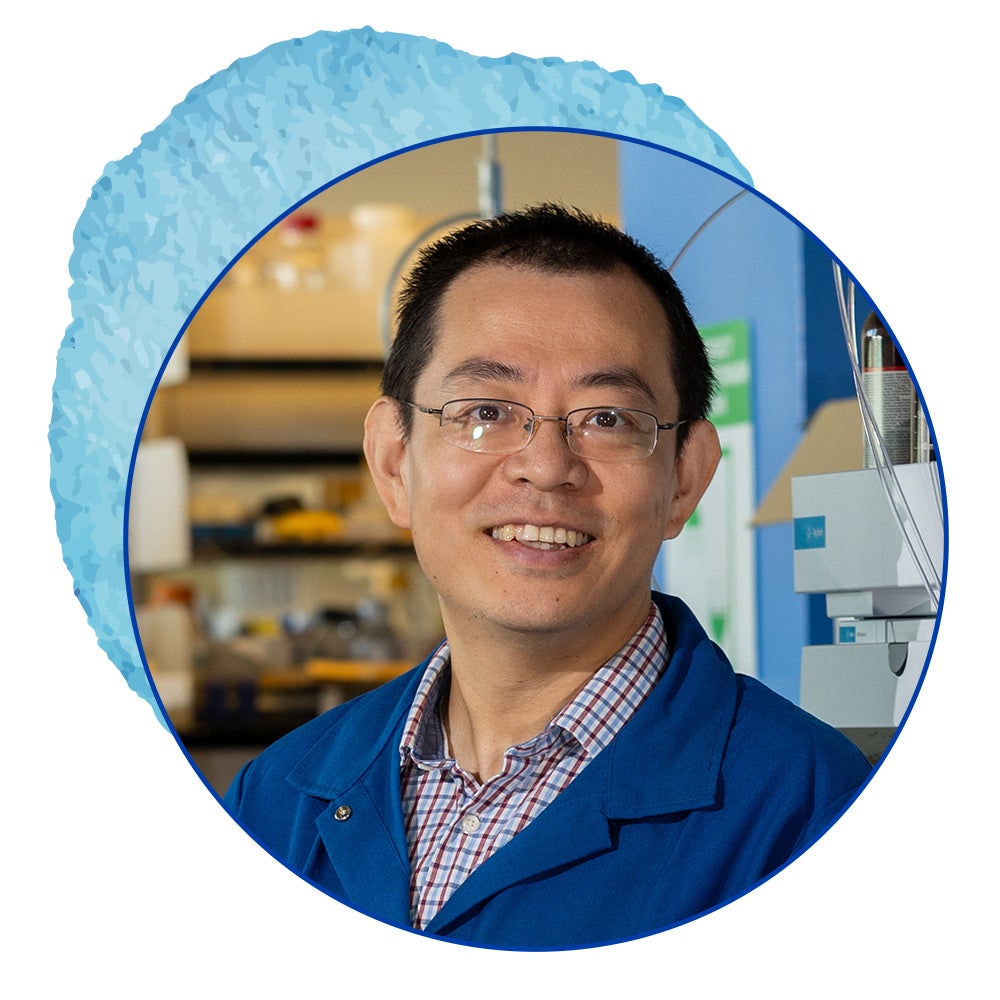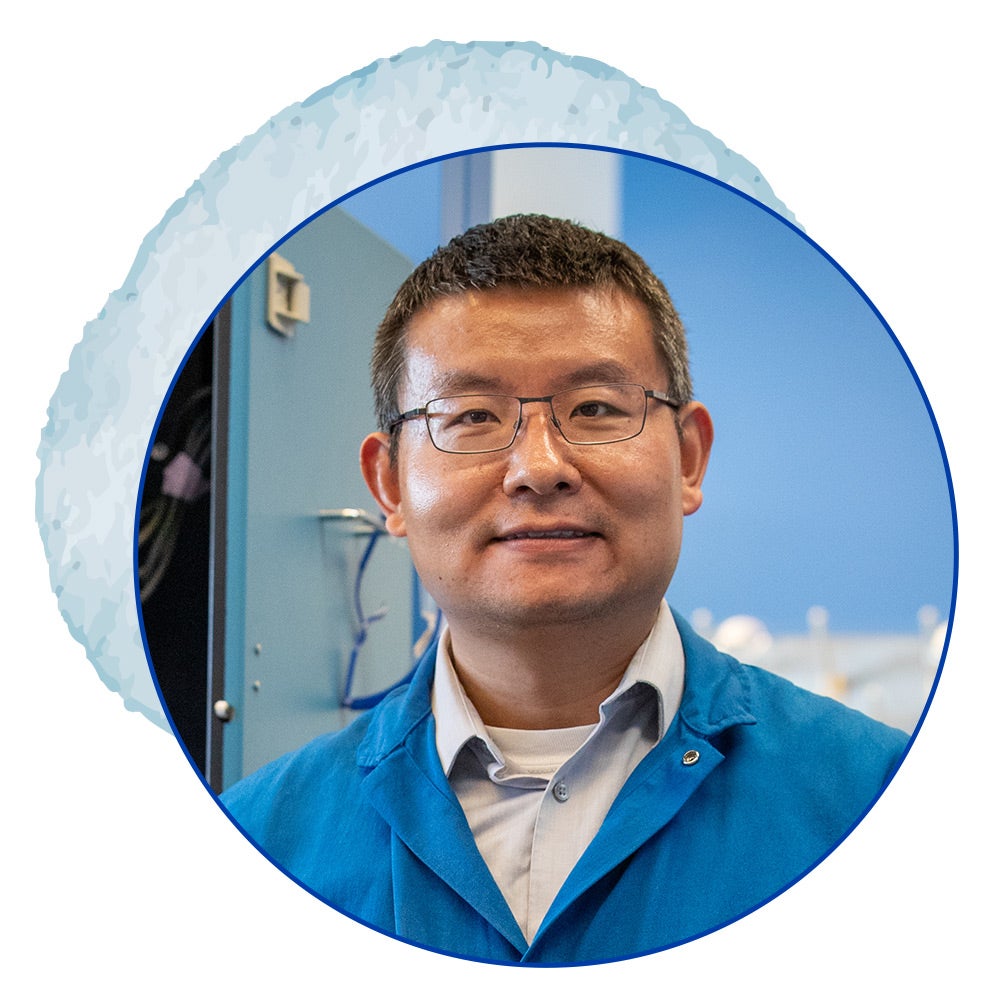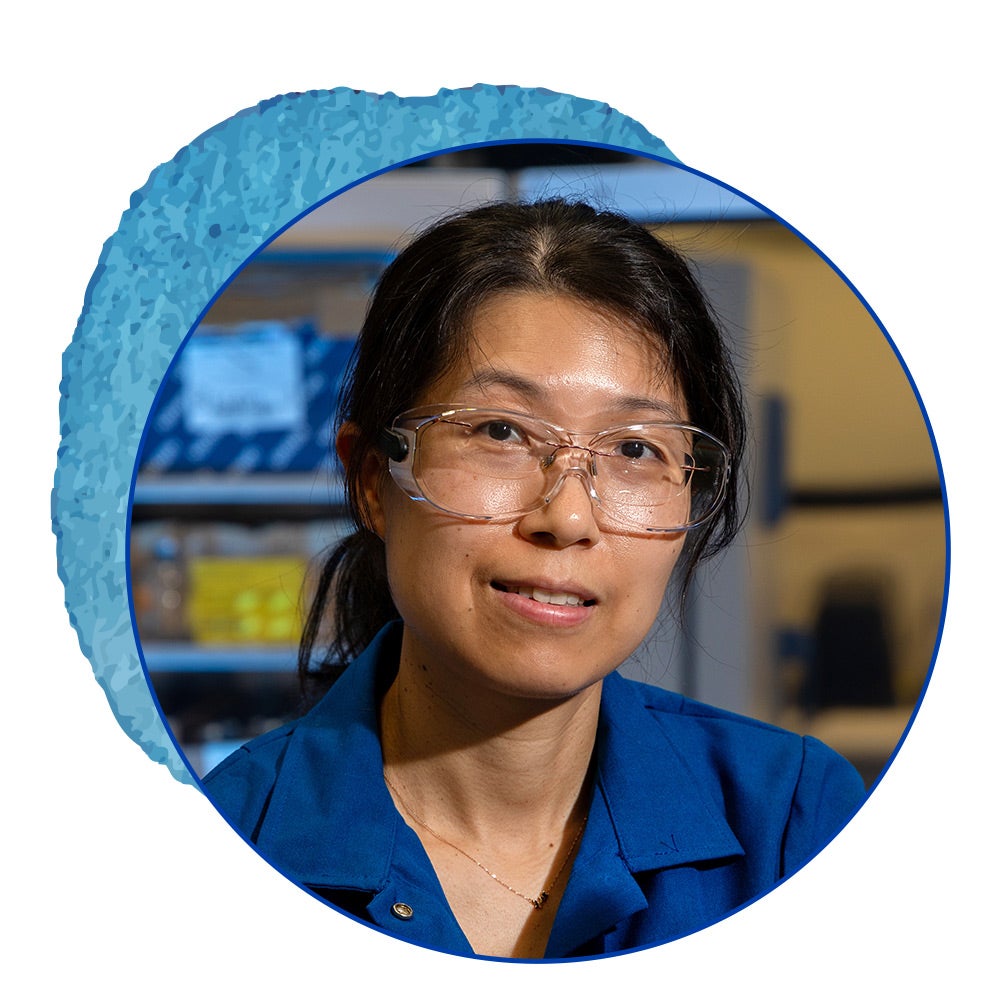Making ‘Forever Chemicals’
a Thing of the Past
UCR is a leader in pollution cleanup innovations
By David Danelski
F or decades, chemicals that coat stain-resistant carpets, line the inside of microwave popcorn bags, and improve the performance of fire retardants have been making their way into our drinking water, food, and bodies. Now, the U.S. Environmental Protection Agency, or EPA, wants these carcinogenic “forever chemicals” cleaned up.
Earlier this year, the EPA solicited public comments for a proposal to limit some of these pollutants — known as per- and polyfluoroalkyl substances, or PFAS — to no more than 4 parts per trillion in drinking water. Research by several groups at UC Riverside is helping the nation’s water districts take on that challenge and improve public health.
Forever chemicals are so named because they have stubbornly strong fluorine-to-carbon bonds that allow them to persist and accumulate in the environment. However, UCR scientists have identified several chemical and biological pathways to break up these molecules and leave behind harmless substances.
“UCR is positioning itself to be a leader in finding multifaceted solutions to the complex problem of ‘forever chemical’ pollution in our drinking and groundwater supplies,” said Rodolfo Torres, vice chancellor for research and economic development at UCR. “This fits with our mission to develop innovations that improve public health and environmental sustainability and bring them to the world marketplace.”
A LEGACY OF CONTAMINATION
PFAS compounds came into widespread use in the 1940s, ushering in the post-World War II age of modern conveniences. With their ability to “cling” to various materials and form barriers that resist heat, moisture, lipids, and certain gases, they keep food from sticking to cookware; coat grease-resistant pizza boxes and candy wrappers; and give carpets, upholstery, and clothing the ability to resist moisture and stains. These compounds are also found in various cleaning products, paints, varnishes, sealants, and fire repellants, among many other products, according to the EPA. Consequently, PFAS compounds have leaked into groundwater over the years, finding their way into our drinking water and food. Even dairy and meat products have become sources of human exposure. One report by the Centers for Disease Control and Prevention found PFAS in the blood of 97% of Americans.
The ill health effects are many. For starters, they are carcinogenic. Certain levels of PFAS exposure increase the risk of testicular, prostate, and kidney cancers, according to the EPA. These pollutants also may lead to decreased fertility, increased high blood pressure in pregnant women, developmental delays in children, low birth weight, and accelerated puberty. PFAS compounds also have been found to compromise the immune system’s ability to fight infections and interfere with hormone function.
A GREAT NEED
UCR’s leadership on PFAS cleanup strategies is fitting for a region that for decades has struggled with water supply, chemical contamination, and reuse concerns, said Haizhou Liu, a professor of chemical and environmental engineering in UCR’s Marlan and Rosemary Bourns College of Engineering.
The Inland Empire was once solely supplied by surface and groundwater sources fed by mountain runoff that allowed for citrus farming and cities to be established. As the population grew, so, too, did chemical contamination from industry, water imports from Northern California and the Colorado River, and the need for wastewater treatment and recycling.
With technical expertise in a variety of areas and collaborations with water providers and groundwater cleanup specialists, UCR is on the frontline in fighting against forever chemicals, said Yujie Men, an associate professor of chemical and environmental engineering. And not only in the Inland Empire and Southern California — but the nation and world.
RESEARCH IN ACTION
The work of UCR researchers goes beyond proving concepts in laboratories. Faculty members are filing patents, scaling up their technologies, consulting with municipal water providers and companies that specialize in environmental cleanup, and starting their own companies. Here are the innovative ways these researchers are helping rid the world of ‘forever chemicals.’
SHINING AN ULTRAVIOLET LIGHT
“To develop water cleanup technologies, UCR has the advantage of talented faculty members, postdocs, and students with deep knowledge of chemistry, and an administration that provides laboratories with the equipment we need,” said Jinyong Liu (no relation to Haizhou Liu), an associate professor of chemical and environmental engineering, who is supported by multiple Department of Defense grants and has published more than 15 papers on PFAS destruction over the past seven years.
Liu’s research group has studied more than 100 PFAS compounds and discovered chemical processes that destroy most of these compounds by using a combination of ultraviolet light and sulfite, among other strategies. These pathways leave behind harmless substances including fluoride, which is commonly added to drinking water and toothpaste to improve dental health. His work is protected by three pending patents.
Liu and his group have been collaborating with the national environmental consulting firm Haley & Aldrich to treat the solutions used to flush out residual PFAS-containing foams from military and civilian firefighting equipment and systems. Additionally, Liu said, the firefighting facilities must also deal with thousands of leftover 5-gallon containers of PFAS foam formulations. These chemicals can’t be incinerated or placed in landfills without creating new environmental problems. Yet, Liu said, the foam formulation can be treated using the chemical destruction techniques developed in his laboratory.
Liu is also developing methods to destroy PFAS molecules in a “very dirty soup” containing salts and dark-colored organic matter that’s left over after PFAS-contaminated water is run through treatment systems. With the addition of ultraviolent light, Haley & Aldrich deployed a “pilot-scale” system on U.S. military sites that treats as much as 100 liters at a time, Liu said. Recently, he co-founded Aquatrino, a startup company to advance water safety and environmental sustainability technologies further.
LEAVING NO TRACE
Haizhou Liu, a professor of chemical and environmental engineering, capitalized on his years of research in photochemical processes to discover that shortwave ultraviolet light combined with tuning gases such as hydrogen breaks down the stubbornly strong chemical bonds in PFAS into fluoride. His method leaves behind no harmful substances, and, more importantly, requires no additional chemicals. This technology is also protected by a pending patent and is gaining interests from public water districts, wastewater dischargers, and the Department of Defense, Liu said.
“We have very interdisciplinary teams with diverse expertise that can tackle different aspects of this complex problem,” Liu said. “We are collaborating with several public water districts in Southern California to pilot test our IP-protected PFAS destruction technology beyond the lab using real PFAS-impacted water. The results are very promising.”
Liu, who holds a professional engineer license, added that UCR technologies that use ultraviolet light are appealing to water providers because they have been using related technologies for decades to recycle wastewater. For example, the Rapid Infiltration and Extraction facility in Colton, California, uses ultraviolet light to disinfect wastewater from Inland Empire cities before it is discharged into the Santa Ana River.
“What is exciting is our tunable and shortwave UV technology, which is nontraditional UV light, compares to traditional UV light used for disinfection,” said Liu, who established a company called Water Illumination, Inc. to market his innovations.
PUTTING THE HEAT ON PFAS
Ying-Hsuan Lin, an associate professor of environmental sciences in UCR’s College of Natural and Agricultural Sciences, is solving a problem faced by water treatment plants that use porous charcoal, also known as granular activated carbon, to filter out PFAS pollutants.
Once the charcoal becomes saturated with PFAS compounds, its disposal creates a dilemma, she explained. Burning it would create carbon emissions, while putting it in a landfill could result in more leaks. Lin, however, is developing a system that heats up the PFAS-saturated charcoal in a closed system with pure nitrogen. This destroys the PFAS compounds without releasing greenhouse gases, and the charcoal then can be reused, she said.
“We try to save the carbon and prevent the release of the byproducts,” Lin said. “If we burn the carbon, it produces carbon dioxide, which is emission of the greenhouse gases. We don’t want to increase the carbon dioxide.”
GOING ALL NATURAL
Yujie Men, an associate professor of chemical and environmental engineering, is developing biological methods to treat contaminated groundwater before it reaches wells. She has found that certain species of naturally occurring soil bacteria break chemical bonds in PFAS compounds, which starts a chain of reactions that destroys the pollutants. The discovery stems from a finding by Jinyong Liu, published in 2016, that certain PFAS structures could be destroyed by catalysts shared among microorganisms. Men and Jinyong Liu’s subsequent collaboration resulted in funding from the National Science Foundation and Department of Defense, and five journal papers describing the microorganisms responsible for biological destruction of PFAS compounds and their specificity.
Men said she is getting interest from Southern California water districts and the fluorochemical industry for her work with naturally occurring soil bacteria. In a more recent paper, Men identified two common soil bacteria that can be used to clean groundwater and wastewater contaminated by certain PFAS compounds. The cleanup of those PFAS contaminants could be expedited, she said, by providing these organisms the nutrients they need to thrive and expand their numbers.
“The microorganisms I am using right now are all commonly occurring,” Men said. “They’re not difficult to get, and they’re not difficult to grow.”
Although biodegradation alone may not be enough to completely destroy PFAS, microbial defluorination processes discovered by Men combined with physicochemical processes could offer a more cost-effective treatment approach. She has two pending patents.




